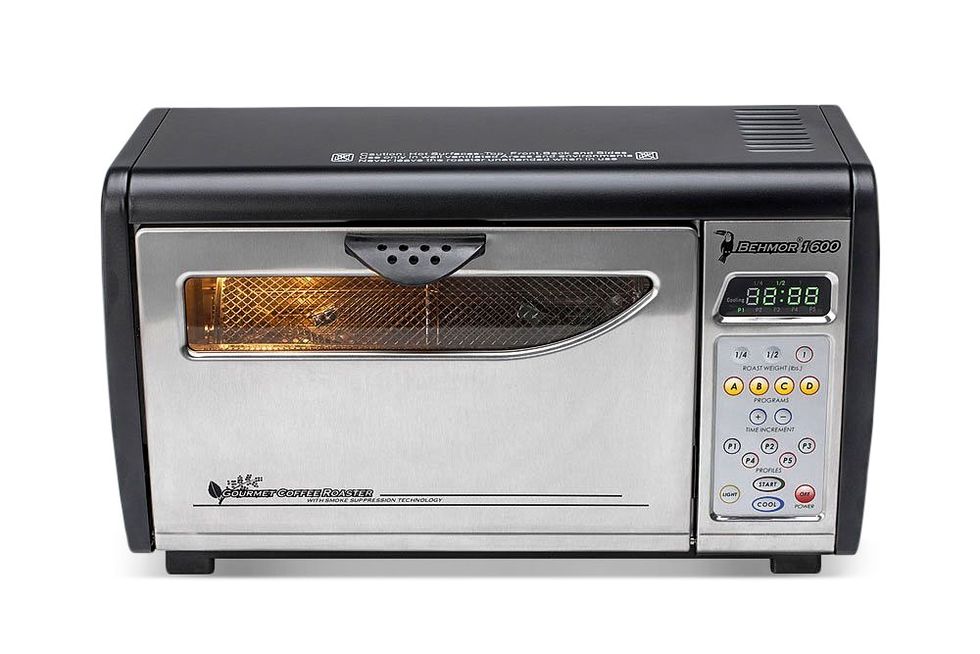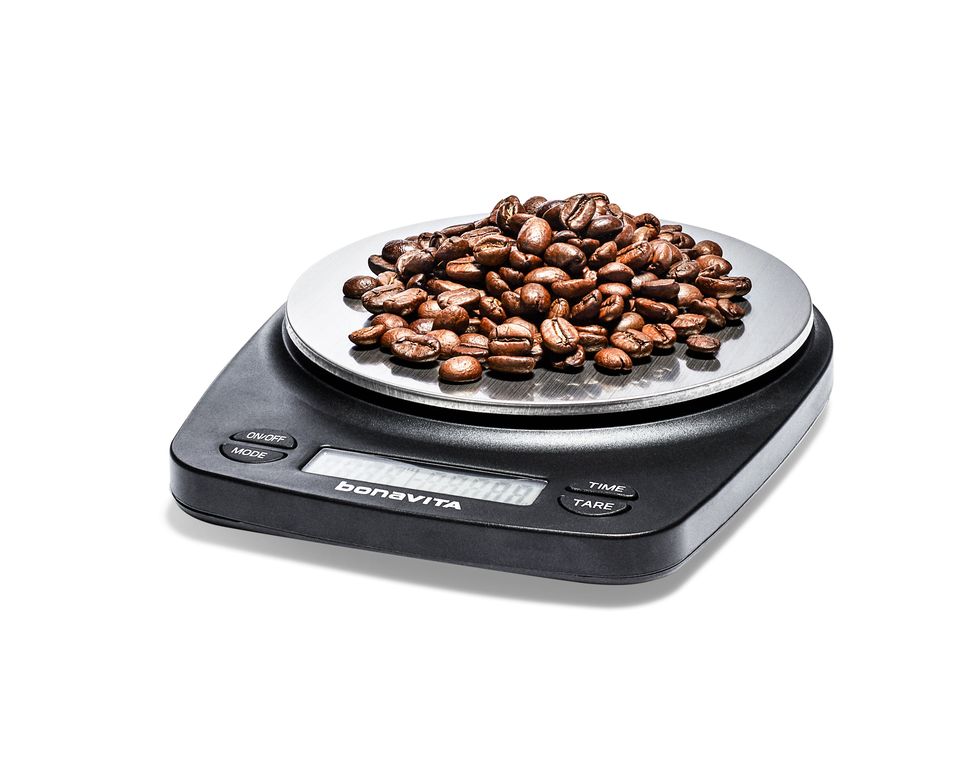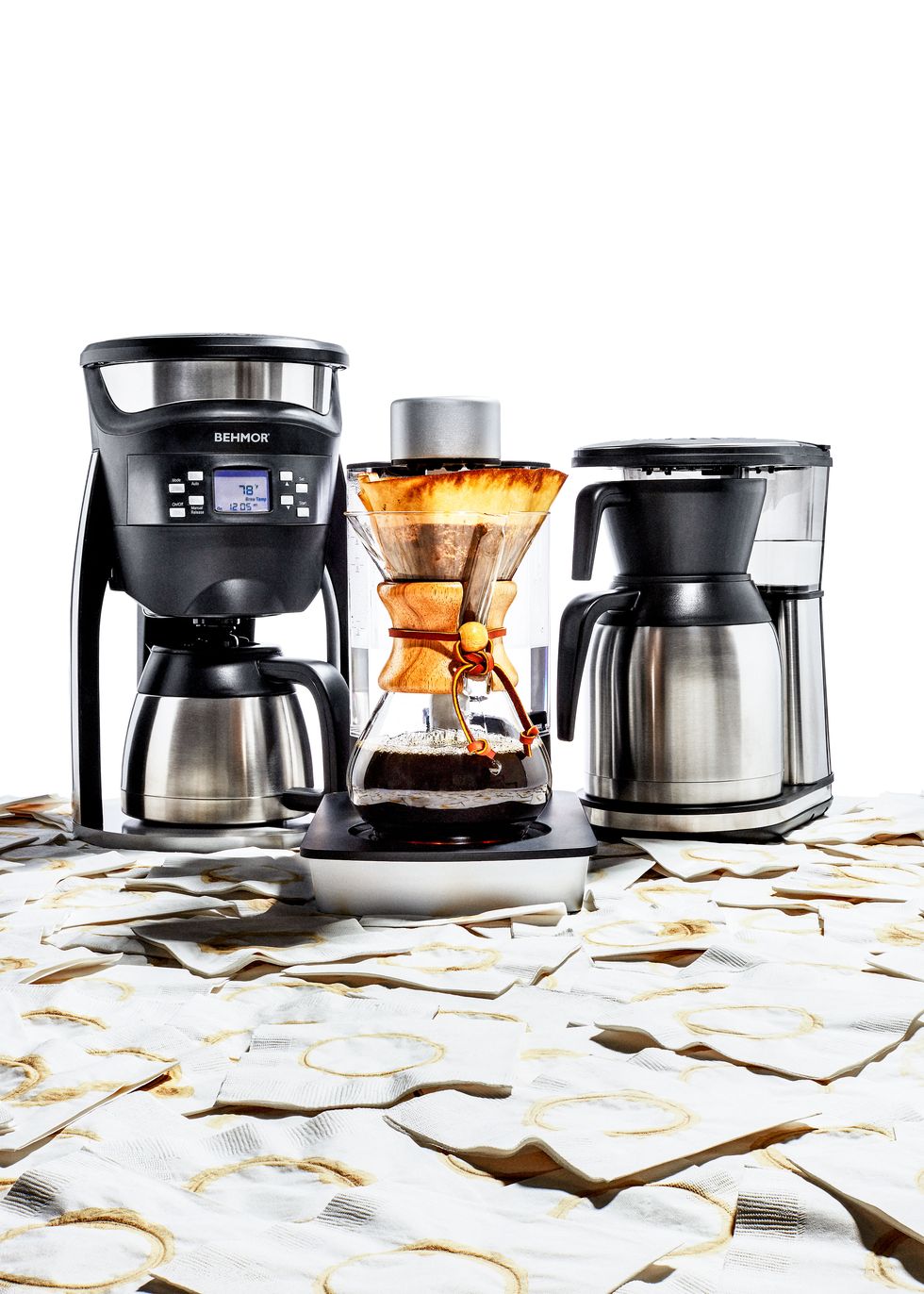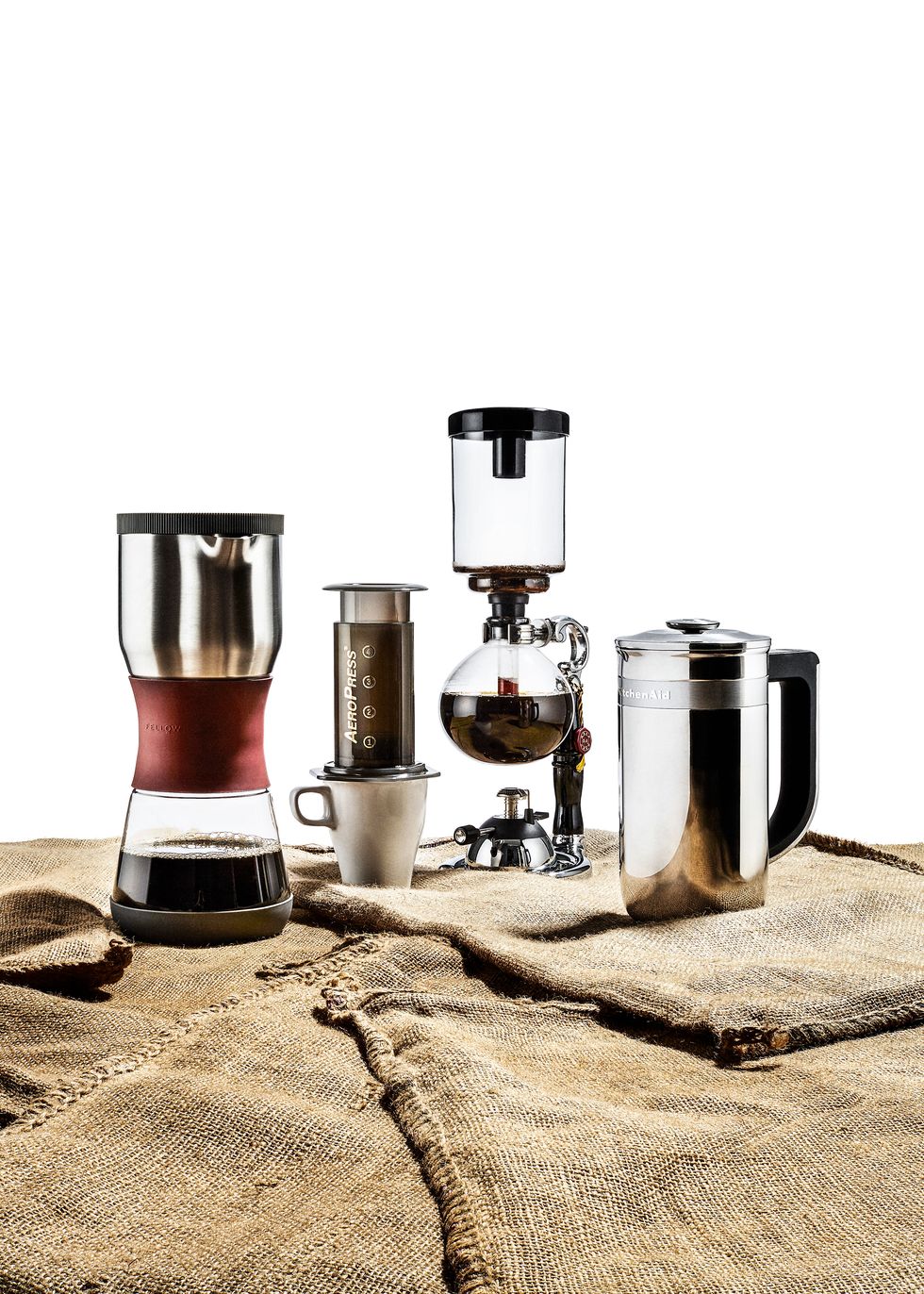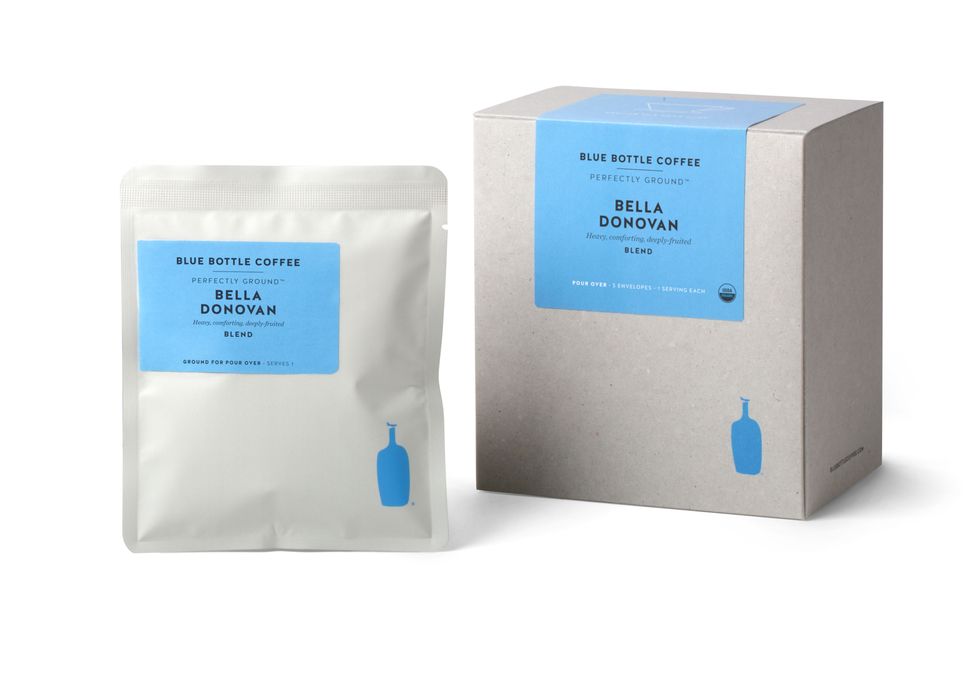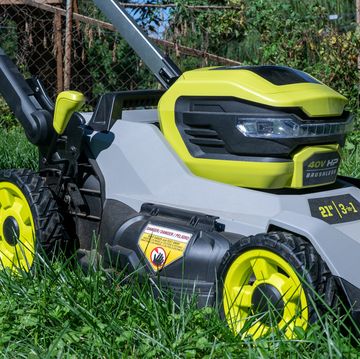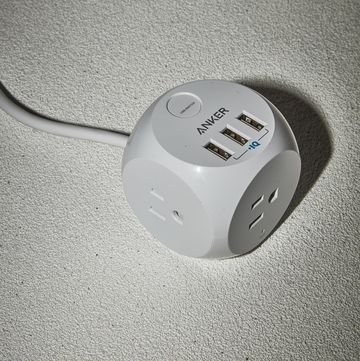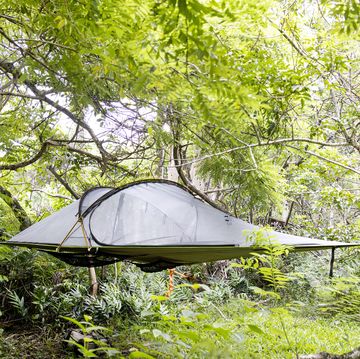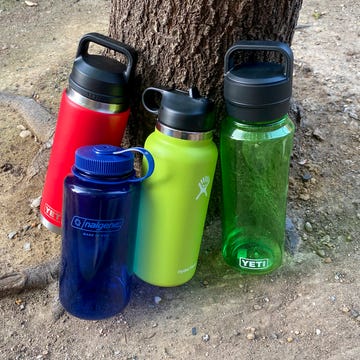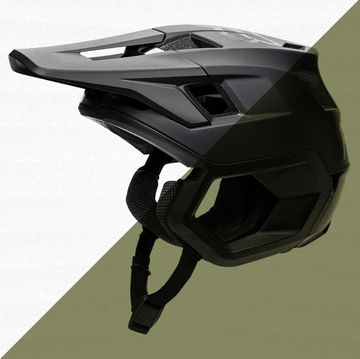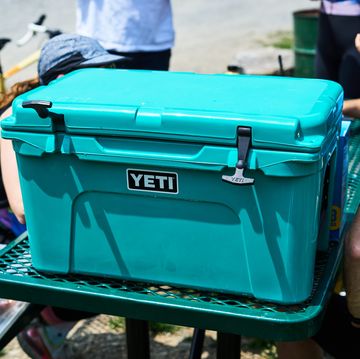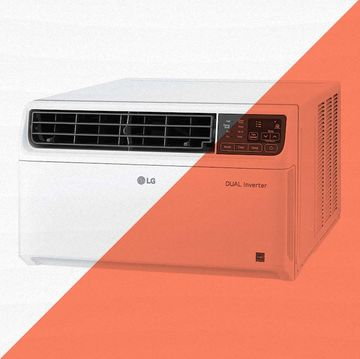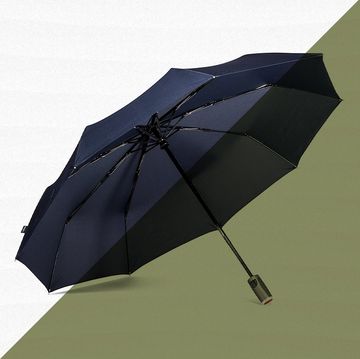It's easy to take your coffee for granted. Mix hot water with grounds, and within minutes you're warmed and awake. But there's science in that process—science that can be tweaked and perfected. Changing your beans, grind size, filter, brew time, and water temperature all shape how your coffee tastes and feels, says Paul Schlader, Birch Coffee co-owner and certified Q Grader—the coffee equivalent of a sommelier. For example, choose a finer grind to create more surface area, which lets more water into the bean to release more flavor. With the help of Schlader and his crew at Birch, over three weeks we tested every grinder, brewer, and pour-over contraption we could find. We consulted baristas across the country. And we really drank a lot of coffee. We're excited to show you the results. Maybe even a little jittery.
Preparing the Beans
Crafting a better pot of coffee begins before you start brewing.
1. Roast
You don't need to roast your own coffee. But you also don't need to fix up that old truck yourself, or build your own deck. Roasting at home puts you in the driver's seat to make the perfect bean for your household. Unlike other home roasters, the smoke-suppressed Behmor 1600 Plus ($370) can be used indoors. As moisture and oils leave the beans, metal coils on the ceiling of the countertop unit reheat and virtually eliminate the smoke. Five preset roasts will help you get your bearings before you start to truly customize. You can buy green, unroasted beans online. (We like Roastmasters.com.) For your first batches, try beans from Central America. They have consistent size, quality, and a wide range of flavors, which makes them especially forgiving if roasted too long or too little.
2. Store
To keep beans fresh longer, store your coffee in a dark, temperature-stable environment (like your cupboard), with minimal exposure to air, says Todd Goldsworthy, the 2014 and 2016 U.S. Brewers Cup champion. With an inner lid and valve that forces air out of the canister, AirScape containers (starting at $24) create a nearly oxygen-free environment. Goldsworthy also urges you to stop storing beans in your freezer. They won't last longer but will absorb unpleasant flavors.
3. Weigh
To brew a consistently delicious cup, you need to be consistent in your dosage and how long you let the coffee brew. Which means you can't just trust your instincts. You need a scale. Unlike the average kitchen scale, the Bonavita Auto Tare ($60) measures to a more precise tenth of a gram. For brewing a pour-over on the scale, a timer senses the weight change from the water and automatically starts once you begin dousing the grounds.
4. Grind
There are two types of grinders, blade and burr, but you'll never find a blade grinder in a barista's kitchen. The whirling blade operates like a blender, but heats up the grounds and burns off flavors. It also produces a wildly variable grind, which can be even worse. The mix of too-fine and oversize particles leads to inconsistent steeping—since the bigger the grounds are, the more quickly water passes through them—and weak coffee. Burr grinders crush beans between rotating plates for uniform, uncooked grains. The Baratza Encore ($130) , above left, is a workhorse with 40 grind settings and an ideal choice for your first big grinder upgrade. For a little more money, the Breville Smart Grinder Pro ($200) offers 60 settings for enthusiasts seeking the perfect grind for every brew method and type of bean.
Drip Coffee, Reinvented
These gravity brewers operate using—you guessed it!—gravity, delivering hot water to grounds and slowly straining out the coffee. It's like your old Mr. Coffee, although these brewers are finely tuned to deliver water at the perfect temperature: hot enough to release maximum flavor, but not so hot as to extract bitterness from the bean.
For the lab tech: Behmor Brazen Plus (left)
With the Behmor Brazen Plus, you can program a pre-soak, brew temperature and an automatic start. If you like sweeter flavors, set the temperature between 197 and 200 to dial back the coffee extraction. Set it between 202 and 207 for a brighter, more acidic cup. You can also replace the kettle and basket with a pour-over brewer to make it an automatic.($200)
For the aesthetically inclined: Chemex Ottomatic (center)
Even if you never use it, the Chemex is pretty enough just to put on your countertop. And it's available with an automatic pour-over, in case you're feeling lazy. A showerhead evenly pulses 197- to 205-degree Fahrenheit water onto the grounds to mimic the slow dispersal of a barista's kettle, while a hot plate keeps your next cup of coffee warm. ($350)
For the casual barista: Bonavita BV1900TS 8-Cup (right)
Instead of the typical cone-shaped filter, which unevenly funnels water through the grounds, the Bonavita uses a flat-bottomed filter basket to extract coffee more evenly from the beans. A 1500-watt heater holds the brewing water at that ideal flavor-extraction temperature of 195 to 205 degrees. The insulated pitcher keeps the coffee hot. ($190)
The New Immersion Brewers
Not surprisingly, the immersion process immerses (or steeps) grounds, typically for three to five minutes before filtering out the coffee. Submerging the grounds extracts flavorful oils and acids from the beans over time, producing coffee with a heavier body than drip brewers produce. Just don't leave grounds in the water too long. After more than five minutes, the contact time between the coffee and water tends to release the bitter flavors of the bean.
For the coffee hacker: Fellow Products Duo
This combination brewer and carafe creates the full-bodied coffee of a French press without the over-extraction and resulting bitterness. With a twist of the lid, the stainless-steel Duo separates the liquid from the grounds, so your extra coffee doesn't keep brewing between cups. ($100)
For the traveler: Aerobie AeroPress
It's cheap, fast, simple, and perfect for travel, if you're the kind of person who packs your own coffeemaker when you leave town for the weekend. Just mix grounds and hot water in the chamber for a minute, then press out your coffee through the filter. ($30)
For the Breaking Bad Fan: Yama Siphon
This hand-blown coffee chemistry set heats water in the lower globe until the building vapor pressure sends boiling water to the upper globe where it cools slightly and mixes with grounds. Cut the heat after a minute and your coffee descends back down through a filter, ready to be enjoyed. ($67)
For the French-press devotee: KitchenAid Precision Press
French pressess don't have to make a bitter cup. Just pour all the coffee after it's brewed so it doesn't steep longer on the grounds. This insulated, double-walled brewer has a built-in scale to measure your grounds and water, and a timer to tell you when your coffee is ready. ($150)
How I Brew by Ben Jones, 2016 U.S. AeroPress Champion
I think of brewers like cars. A Kalita or Chemex is like a Toyota Camry: not flashy, but will always get you from A to B. These all have a restricted flow rate, which reduces the barista's impact. Hario's V60 ($25) is more like a Porsche or 427 AC Cobra. It has aggressive channels and a large drip hole, which lets water flow through very quickly. The unrestricted flow can create a wider range of cup profiles. Faster pours make a bright, light-bodied coffee. Slow your pour and the body increases while the flavor tones down.
The Coffee-Brewing Tank for Any Worksite
The OXX Coffeeboxx ($230) is built to travel and simple to use: Fill the tank with water, insert a K-cup pod, select a size serving, and then wait for it to brew. Its 2.5-liter removable water tank can make ten cups of coffee, and its watertight design prevents spills on rough rides. The Coffeeboxx has a rubberized handle, a three-foot retractable power cord to make it mobile, and a chassis rated to withstand a 1,500-pound load. That makes it the only coffeemaker you can sit on or, in a pinch, prop up a grand piano with.
An Insert That Heats—and Cools—Your Coffee
Double-walled stainless travel mugs keep your coffee piping hot for hours, but what good is scalding coffee that's too hot to drink? The Stanley QuickSip insert ($15) slides into your mug or bottle and absorbs excess heat—as much as 47 degrees. In the ensuing hours, it re-releases the energy to keep the coffee hot and drinkable. (Coming Spring 2017)
Never Buy Pre-Ground Coffee—Unless It's This One
Oxygen is the biggest enemy of freshness. When beans are ground, flavor escapes in as little as three minutes. But for when you require pre-ground, Blue Bottle Coffee created Perfectly Ground (starting at $18 for a five-pack) ground coffee packaged in an oxygen-free environment.
Tips!
• The easiest way to make better coffee? Buy whole, fresh beans. Fresh means within three weeks of roasting, says Shawn Steiman of Coffea Consulting (which is not a typo), who holds a Ph.D. in coffee science, which is a real thing.
• Paper or metal filters? Your choice of filter carries an outsize impact on what you end up sipping. Because of their holes, metal filters allow more oils and fine particles into your cup, giving your coffee more body. Paper filters, however, keep those tiny bits of grounds and oils out of your mug. That might mean less body, but it also means more distinct flavors. It's up to you. Just avoid brown paper filters. They have a weird taste.

